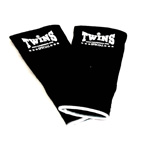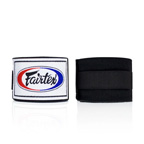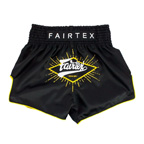
- Date: Friday, March 22, 2024
- Categories: Technique, Muay Thai
Muay Thai Styles
Muay Thai is no doubt one of the most effective, striking based martial arts. The reason
is fairly simple: it turns nearly your whole body into a weapon, as opposed to being
limited to specific limbs (ex. Boxing). Thus, Muay Thai offers quite the variance of
exploitable techniques to its athletes. And this is perhaps why the sport is so exciting
and addicting, for both participators and observers alike.
As one progresses, and starts to acquire the basics and fundamentals, there will come
a time when they naturally, or purposely, start to gravitate towards a specific style with
specific techniques. This is where the art of martial arts comes into play, as fighters
begin to display their individuality through specialization of certain styles.
While the techniques of Muay Thai (punches, kicks, elbows, sweeps, etc) are limited,
the way with which they are combined and utilized are not. Over time, you can start to
develop a style that is truly unique. Becoming familiar with some of the following Muay
Thai styles can greatly aid in the endeavor of finding and creating your own.
Muay Femur (Sniper)
A sniper rifle is a weapon that excels in its pinpoint accuracy. You do not fire this
weapon at random or in a rush. The shooter fires only when he has the perfect shot;
there is no guesswork. And so it is with the Muay Femur.
Generally known as technicians, or "IQ fighters", Muay Femurs are extremely crafty and
calculated. They rarely throw with reckless abandon, rather choosing to find and create
the perfect opportunities to strike. These fighters also love to utilize feints, set traps, and
trick their opponents through various methods.
The most obvious Muay Femur of this era to come to mind would be Saenchai, who
even at the age of 42, is continuing to beat top competition while making it look easy.
Samart Payakaroon, of the Golden Age, is another prime example. Nong-O
Gaiyanghadao, Superlek Kiatmoo9, Sam-A Gaiyanghadao are some more.
Muay Mat (Shotgun)
The shotgun packs tremendous, thunderous power. And so does the Muay Mat. Both
likewise excel when up close and personal.
These types of fighters use their boxing more than anything else. Some crucial
compliments to this punch heavy style is heavy forward pressure and pure
aggressiveness. The combination of such traits tend to result in many knockouts and
exciting fights.
This style also pairs well with low-kicks, with a left hook to right low kick being an
especially effective combination. Ernesto Hoost and the late Ramon Dekkers used this
style very well. Rodtang Jitmuangnon is perhaps the best representative of this style for
the current era. Liam Harrison, too. And, of course, it would be sacrilege not mention
Anuwat Kaewsamrit.
Muay Tae (Assault Rifle)
The assault rifle is a deadly tool at long and mid range. However, it also has other
important uses, such as providing suppressing fire to force an enemy into inaction.
The preferred technique for Muay Tae fighters are their powerful roundhouse kicks,
which can, like the assault rifle, batter opponents at range or simply shut them down
from repeated fire. We see this often with fighters such as Buakaw, Yodsanklai, and
Sitthichai, who throw a constant barrage of kicks, one after the other.
Whether scoring directly, or shutting down the opponents' offense from kicking their
arms, this style of fighter can be especially frustrating to deal with. And though they are
kick-centric, these fighters are not without other tools. Often the jab and teep are used
brilliantly to provide setups for their devastating kicks.
Muay Sok (Sword)
The sword used to be the standard weapon before the advent of gunpowder. It is used
to cut and stab with awful results. If you were faced with someone wielding one of these
weapons, the best thing to do would be to create as much distance as possible between
you and them. And when facing a Muak Sok fighter, the same applies.
These fighters use their elbows in devastating fashion. Like the thunderous punch of a
Muay Mat, a properly placed elbow can end a fight immediately and in seismic fashion.
But they are also used, like the sword, to cause major cuts and gashes. It is perhaps the
most savage style, and causes the most amount of blood and damage.
Though elbows are best when in close range, they can be used effectively in other
ranges as well. A step-in, upward elbow, for example, is one of my favorites. It can be
thrown from range and slip right through an opponent's guard. Britain's Jonathan
Haggerty uses this elbow often and to great effect. His skipping, downward elbow
knockdown on Joseph Lasiri in One Championship is perhaps the best long range
elbow in recent times.
Far from being limited to pressure fighters, Muay Sok stylists are often counter fighters
as well. Golden era legend, Karuhat Sor Supawan, is a great example of that.
Yodkhunpon Sittraiphum, Muangthai PKSaenchaiGym, and Toby Smith are some other
successful elbow hunters as well.
Muay Khao (Spear)
Like a sword, the spear is a sharp and deadly weapon. But unlike a sword, the spear is
used in a thrusting, rather than slashing manner.
Muay Khao fighters specialize in knee strikes, with spearlike penetration. Like the
elbow, the knee is an especially hard bone. A well-placed knee can thus take down
even the most resilient of opponents. Generally pressure fighters, a Muay Khao will no
doubt also be very skilled in the clinch. Strength is one of their main assets.
Like a boa constrictor, they work to coil around you until there is no space left to breathe
properly. Along with strength, these fighters rely upon superb conditioning. And though
primarily knee fighters, a Muay Khao will likely use all tools of the clinch, such as elbows
and sweeps.
If the spear analogy doesn't please you, perhaps think of a battering ram then. Made of
basic materials like wood, this tool, when used with enough momentum, could knock
down stone walls. Watch Supergirl Jaroonsak do her knees and you will at once get the
similarity. By tweaking her technique, she produces an absurd amount of power.
The most emblematic fighter of this style is perhaps Dieselnoi Chor Thanasukarn of the
golden era. He is also a good example of how physical traits mold ones style. Being
exceptionally tall for his weight, he was thus able to manipulate opponents in the clinch
very effectively. Two good examples from the modern era are Sagetdao Petpayathai
and Petchboonchu FA Group.
What's your style?
There are many factors that determine ones style. Physical builds and attributes are
perhaps the strongest factors. Are you short, stocky, with innate power? This type of
person would likely thrive as a Muay Mat. What about someone who is of average size
for their weight, but has lightening speed and excellent reflexes? Muay Femur would be
the most logical style to take on for this person.
Ones training also plays a big part. Did your coach imprint upon you their specific style,
or did they vary it up, fine-tuning their teaching to accommodate your own innate
features and predilections? A lot of it is natural as well, flowing to one in time as they get
experience and a feel for the techniques.
Each style has its own strengths but also its own weaknesses. As you come into your
own, these will become accentuated. Mastering each Muay Thai style is simply not
feasible. But, it is wise to be at least somewhat conversant in all of them. You might not
always be able to fight how you want; different circumstances require different
approaches.
Strive for adaptability above all else. Good Luck!







